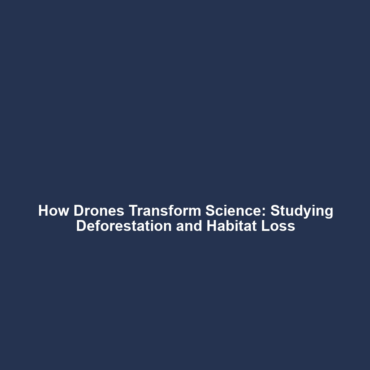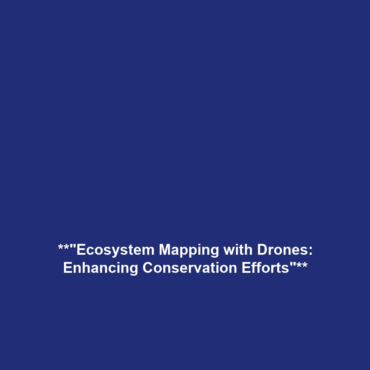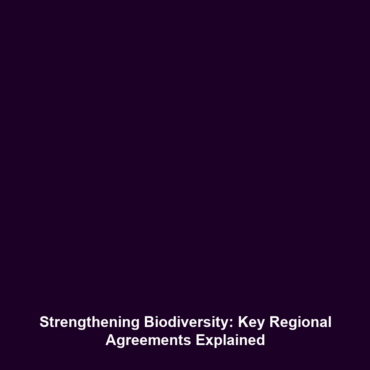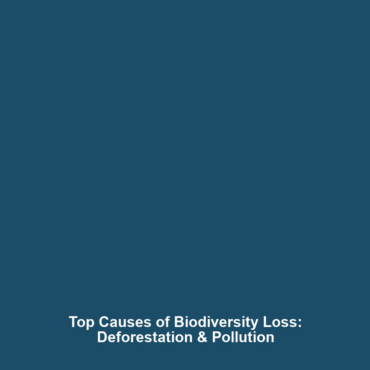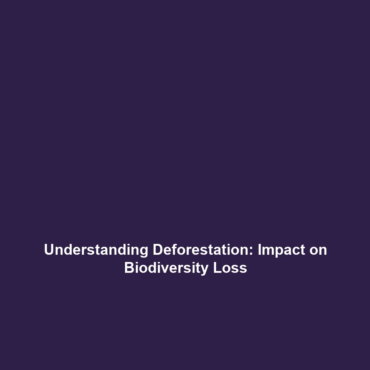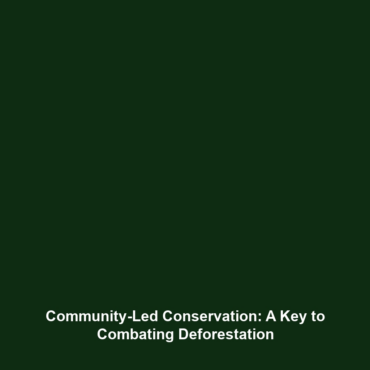How Drones Help Scientists Study Deforestation, Land Degradation, and Habitat Destruction
Drones have revolutionized the way scientists approach environmental research, particularly in understanding complex issues like deforestation, land degradation, and habitat destruction. These unmanned aerial vehicles (UAVs) provide a unique perspective and invaluable data that bolster efforts in conservation and ecological studies. The integration of drones in science is significant as it enables real-time monitoring and data collection, making it an essential tool in addressing global environmental challenges.
Key Concepts
Understanding how drones contribute to the study of deforestation and land degradation requires a grasp of several key concepts:
Remote Sensing Technology
Drones equipped with advanced sensors and cameras allow scientists to perform remote sensing, capturing detailed images and data about land use, vegetation, and ecosystem health. This data is crucial in identifying changes in landscapes over time.
Geospatial Analysis
Geospatial technologies employed via drones aid in mapping and analyzing environmental changes, providing insights into the impact of human activity and climate change on habitats and forests.
Data Collection and Monitoring
Drones facilitate efficient data collection over large and difficult-to-access areas, enabling scientists to conduct comprehensive monitoring of deforestation rates and land degradation processes.
Applications and Real-World Uses
The applications of drones in studying deforestation, land degradation, and habitat destruction are vast and impactful. Here are some notable examples:
- Forest Monitoring: UAVs are used to assess forest health, identify illegal logging activities, and track changes in biomass.
- Soil Erosion Studies: Drones help monitor areas prone to erosion, allowing for the assessment of restoration efforts and the effectiveness of different land management strategies.
- Wildlife Habitat Assessment: Scientists utilize drones to survey and map animal habitats, aiding in conservation strategies and endangered species protection.
Such applications highlight how drones are used in environmental science to gather data that informs policy and conservation efforts.
Current Challenges
Despite their benefits, there are several challenges associated with the use of drones in scientific research:
- Regulatory Issues: Navigating airspace regulations can complicate drone operations.
- Data Privacy Concerns: There are ethical considerations regarding the use of drones, especially in populated areas.
- Technical Limitations: Battery life and payload capacity can restrict flight duration and data collection capability.
- Data Interpretation: The analysis of the vast amounts of data collected by drones can be resource-intensive.
Future Research and Innovations
The future of drones in studying environmental issues looks promising, with ongoing innovations expected to enhance their capabilities:
- AI Integration: Advancements in artificial intelligence will improve data analysis, enabling more accurate predictions regarding land changes.
- Improved Sensor Technology: Next-gen sensors will provide even greater detail and specificity in data collection.
- Swarm Technologies: Research into drone swarms could lead to enhanced data collection efficiency over large areas.
Conclusion
In conclusion, drones are transforming the landscape of environmental science, offering vital tools for studying deforestation, land degradation, and habitat destruction. Their ability to provide comprehensive, real-time data plays a crucial role in ecological research and conservation efforts. As technological advancements continue, the potential applications of drones in science will expand, leading to more effective measures for environmental protection. For further reading, explore our articles on Applications of Drone Technology and Challenges in Environmental Research.
